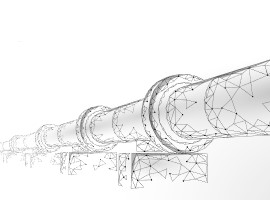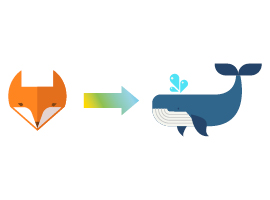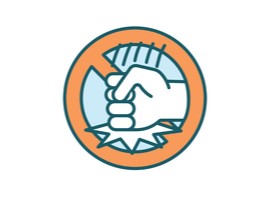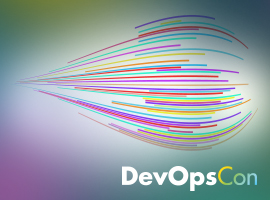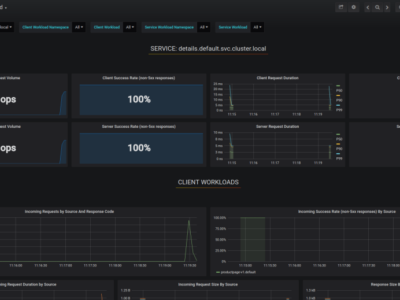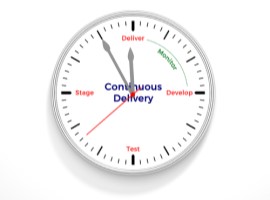- Program
- Program
- Call For Papers
- Program
- Program
- Program
- Program
- Tickets
- Tickets
- Tickets
- Tickets
- Tickets
- Tickets
- Programs
- Blog
- Downloads
- Sponsorship
- Locations
- Service
- Locations
- Register Now
- Register now
- Register Now
- Register now
- Register now
- Register Now
Blog
DevOps Conference
The Conference for Continuous Delivery, Microservices,
Containers, Clouds & Lean Business
25
Mar
/
As more organizations adopt DevOps automation and strategies, usage of automation evolves. In 2020, there are several changes you are apt to see, such as seamless infrastructure, AI and data science collaborations, zero-touch automation, and more. Read on to discover what are the biggest automation trends of 2020, and how they might impact your pipelines.
17
Mar
/
DevOps is a software development strategy that combines development and operations teams. It typically emphasizes agile methodologies, automation, and continuous integration / continuous delivery (CI/CD). It is designed to produce and release quality software at high speed. In this article, you will learn about various methods of securing your DevOps pipelines.
25
Feb
/
After the first steps with containers have been taken, you might want to bring your application clean, stable and continuous into a production environment. In his session at the DevOpsCon 2019, Alexander Trost shows how GitLab CI can be used to continuously deploy applications on Kubernetes.
19
Feb
/
The right time for Production Readiness Reviews and the start of production is not always clear. We spoke with Jaana B. Dogan, Software Engineer at Google, at DevOpsCon 2019 about when you are "production ready", what that actually means and when is the right time for Production Readiness Reviews.
20
Jan
/
Nonviolent communication will help you communicate with your coworkers in a manner that enables productivity and helps you understand how their unmet needs might lead to negative interactions. Successful communication is a huge part of a project’s success – everyone on the team can benefit from NVC. In her session from DevOpsCon 2019 in Berlin, Casie Siekman shows you how it is done.
15
Jan
/
Not too long ago, it was unheard of to put persistent data on Kubernetes. The wise operator would almost certainly have reached for a comparable cloud service and sacrificed functionality for the sake of simplicity and peace of mind.But over the past few years, Kubernetes has matured and grown into areas that would not previously have been considered suitable for container orchestration. This is largely due to the increased stability and feature set of Kubernetes and its growing sophistication as a platform. One of the more powerful features to have emerged in recent releases is the combination of [Custom Resource Definitions] (CRDs) and the [Operator Pattern].
12
Dec
/
The more distributed a software system is designed, the more you should think about resilience. Because of the distribution, calling the involved communication partners can and will often lead to errors. In order to keep the effects of these errors as small as possible, or to avoid them completely, it has become the norm to work with the necessary resilience patterns. But what is the right approach for dealing with resilience? A service mesh tool or a framework? Both approaches have their pros and cons.
11
Dec
/
Did you attend DevOpsCon Munich 2019? Perhaps you were there but couldn’t physically attend all of the talks. Well we’ve got you covered. We collected some of the key takeaways from the conference and want to share them with our readers. We learned about the changing role of Ops, how soft skills are so important they’re now called core skills, what books we should read, and much more. See what went down at DevOpsCon Munich 2019.
3
Dec
/
Today we pay close attention to scaling our systems, testing for chaos, and reducing MTTR in production. Yet our delivery pipelines don’t get nearly as much love. In his talk from the DevOpsCon 2019 in Berlin, Manuel Pais presents tried and tested patterns for increasing accelerating delivery of changes in a safe manner. Manuel Pais will also try to solve the mystery of what is sustainable Continuous Delivery.
12
Nov
In the future, many companies will try to grow their IT infrastructure with the help of the Cloud or even relocate it completely to the Cloud. Larger companies often request multi-cloud solutions. In terms of serverless frameworks, there are several ways to achieve multi-cloud operation. Using AWS Lambda, a function can be provided and the whole thing can be made cloud-independent with Knative.
Stay tuned:
Behind the Tracks
Kubernetes Ecosystem
Docker, Kubernetes & Co
Microservices & Software Architecture
Maximize development productivity
Continuous Delivery & Automation
Build, test and deploy agile
Cloud Platforms & Serverless
Cloud-based & native apps
Monitoring, Traceability & Diagnostics
Handle the complexity of microservices applications
Security
DevSecOps for safer applications
Business & Company Culture
Radically optimize IT
Organizational Change
Overcome obstacles on the road to DevOps
Live Demo #slideless
Showing how technology really works

